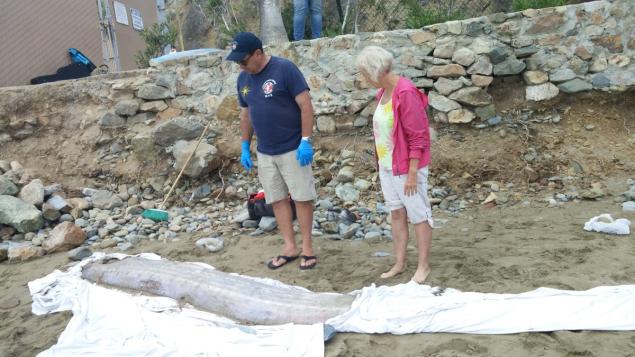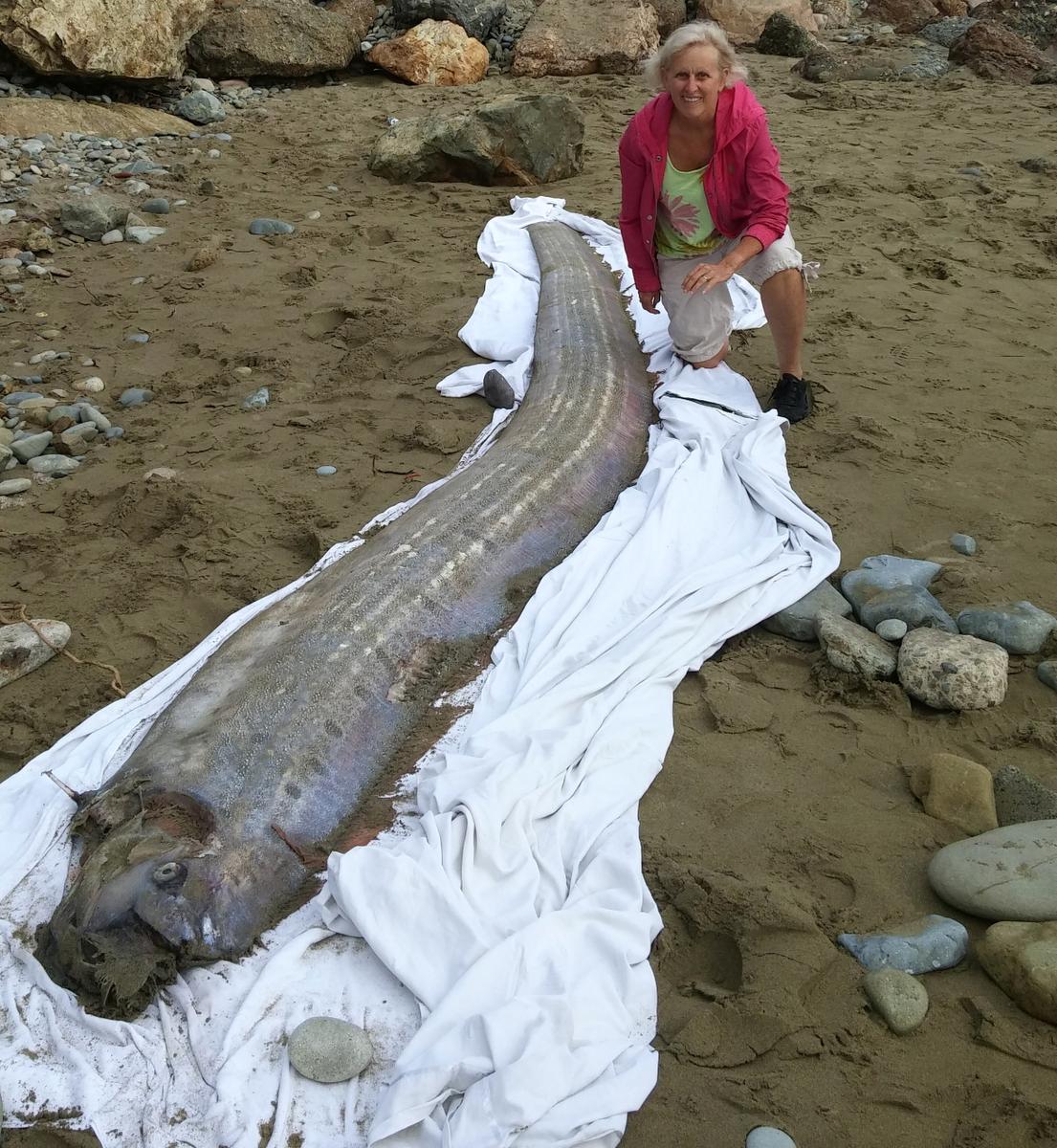
Two California conservationists and a local marine biologist examined a 14-foot creature found on Pebbly Beach at 7:30 a.m.
A 17-foot-long oarfish was discovered in June, just 25 miles north of the beach on Emerald Bay and an 18-footer was spotted in October 2013.
"This is a once-in-a-lifetime opportunity," Annie MacAulay, president and CEO of Mountain and Sea Educational Adventures, who was on the scene, told the Daily News.
The sleek silver fish was missing its pectoral fins and tail. The fish could have measured as long as 20 to 24 feet if it hadn't lost its tail, MacAulay said. But the lengthy fish can grow up to 110 feet, Live Science reported.

MacAulay and her marine team found its belly loaded with krill, tiny crustaceans consumed by blue whales, upon dissection.
The marine mammals usually feed on small fish, shrimp and other invertebrates, the National Oceanic and Atmospheric Administration stated.
This Pacific species lurks deep from 600-1,000 feet, MacAulay said.
Dr. Misty Paig-Tran from California State University Fullerton collected tissue samples Monday to learn about the fish's diet and to determine whether it had any toxins in its system.
But questions still remain as to why these fish are dying.
Earthquakes have been posited as a possible culprit, MacAulay said.
"The last two times there have been oarfish coming up, there's been a lot of seismic activity," MacAulay said.
A 4.0 magnitude earthquake hit Oakland Monday morning 30 minutes before the fish washed up on shore, but MacAulay said the seismic event was most likely too far to be a probable cause.
Dr. Paig-Tran hypothesized the fish could have been washed ashore by the El Nino effect, an irregular series of climactic changes that causes unusually warm currents of water, MacAulay said.
"The way these fish are built, they've got their long dorsal fins and that's the only way to propel that big huge body that weighs hundreds of pounds," MacAulay said. "They get caught up in that uproaring and they can't get back to their home."
The conservationist also speculated that water pollution could be to blame.
"I've been working a lot with plastics in the ocean. In fact, 50% of lanternfish caught had way too much plastic in their stomachs," she said. "It could be just the amount of pollution and plastics, but that's just a theory."



Comment: This type of once rare event has become increasingly common across the world over recent years and perhaps rather ominously often in association with a rise in seismic activity. Maybe the oarfish is known as the 'earthquake fish' according to Japanese folklore for a sound and solid reason borne of generations of first-hand experience? See in addition:
Another deep-sea dwelling oarfish surfaces, this time in Antique, Philippines
Rare 17-foot-long oarfish found dead off Catalina Island, California
Rare deep sea oarfish washes up on marsh in Aramoana, New Zealand
Deep sea oarfish caught by Vietnamese fishermen: Consequences of earthquakes?
Something amiss in the ocean depths? Rare Oarfish washes up on beach in Japan
Deep sea oarfish washes up in La Paz, Baja California Sur, Mexico
18-foot oarfish caught by Catalina marine science instructor in California
Waiting for the big one: giant oarfish start shock waves in LA
Second rare oarfish washes up in Southern California
Something amiss deep down? Bizarre-looking oarfish washes ashore on Cabo San Lucas beach
Rare "King of Herrings" Found off Swedish Coast
Appearance of "Earthquake fish" spook Japanese
England: Monster of deep washes up on beach